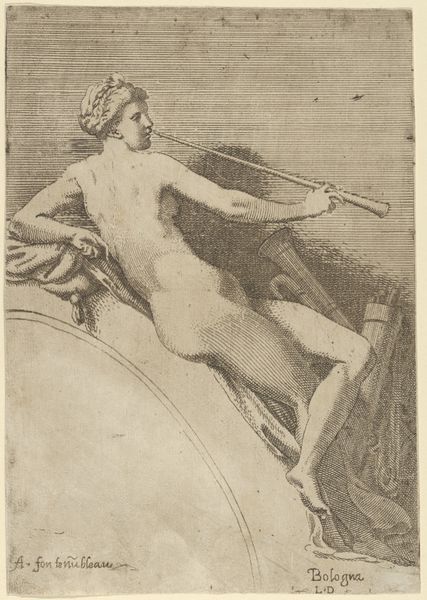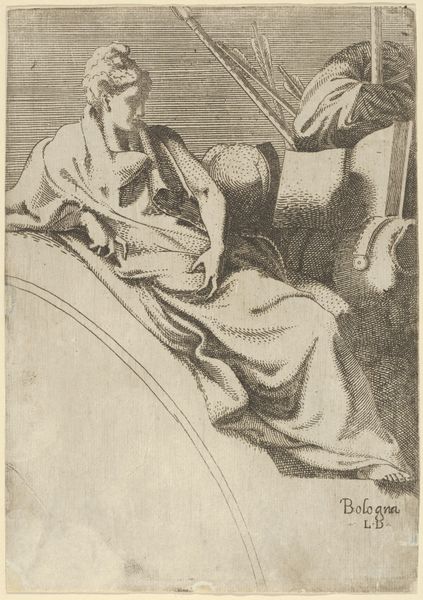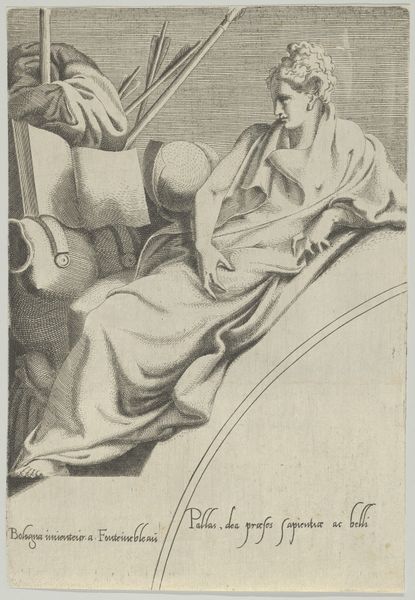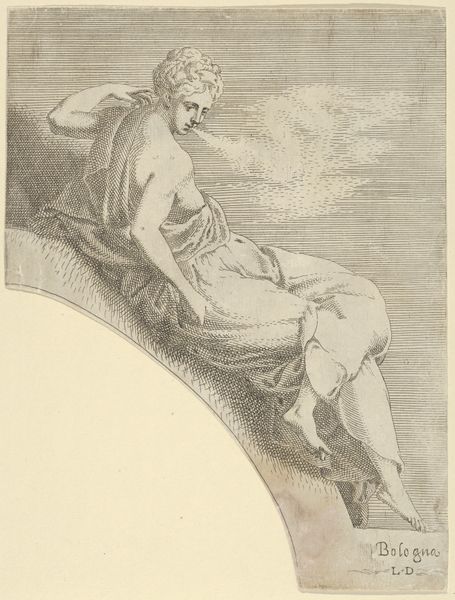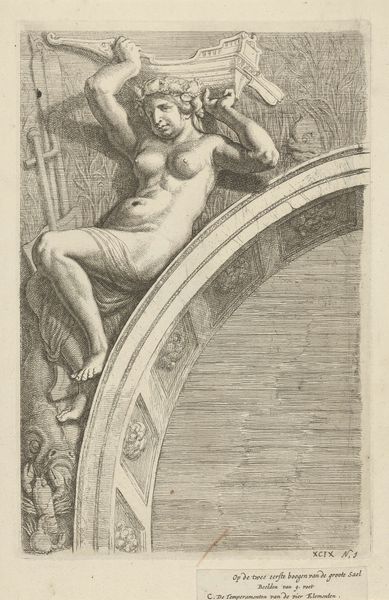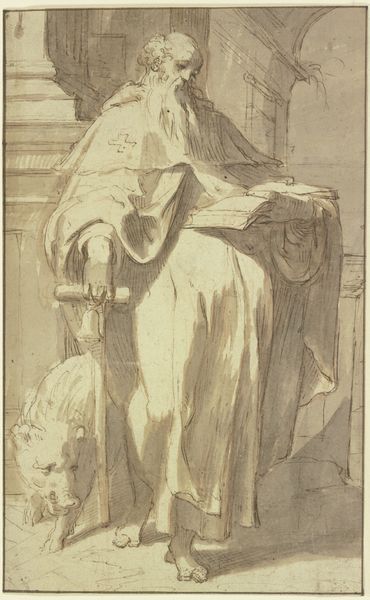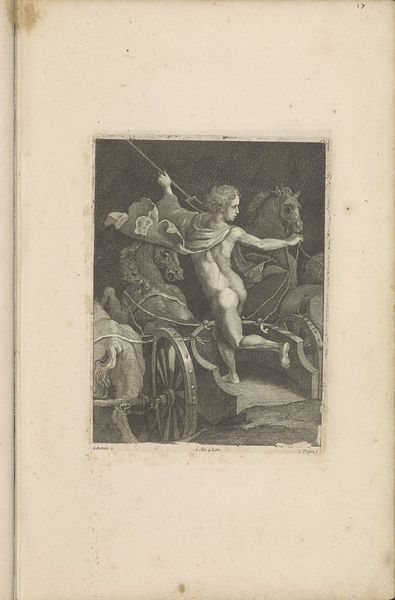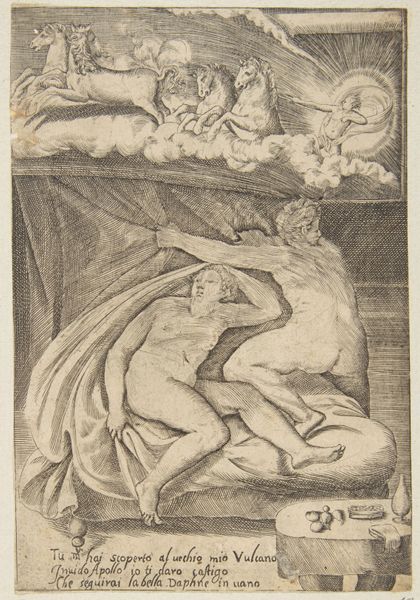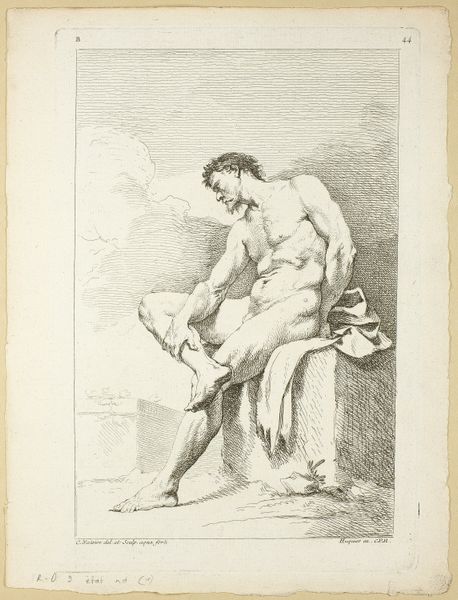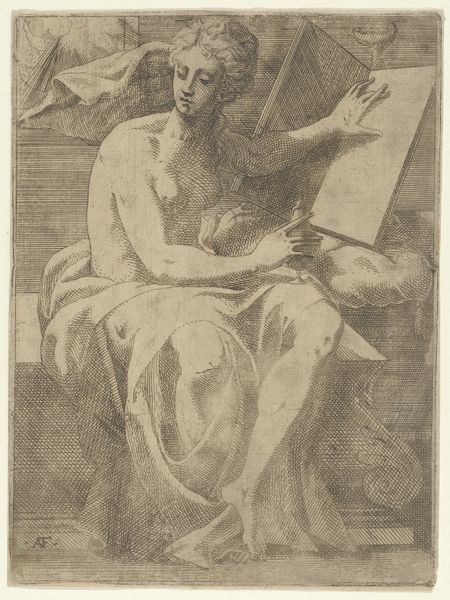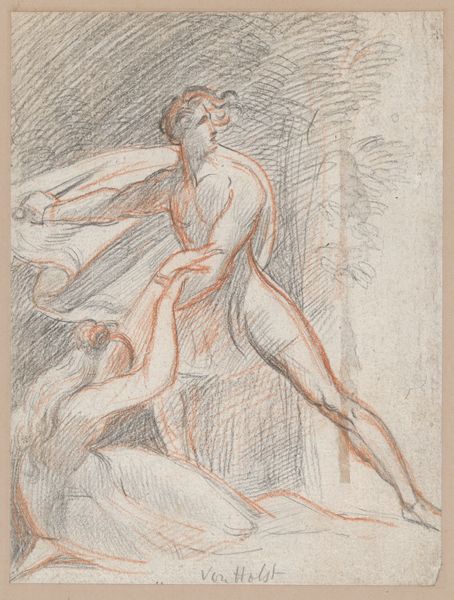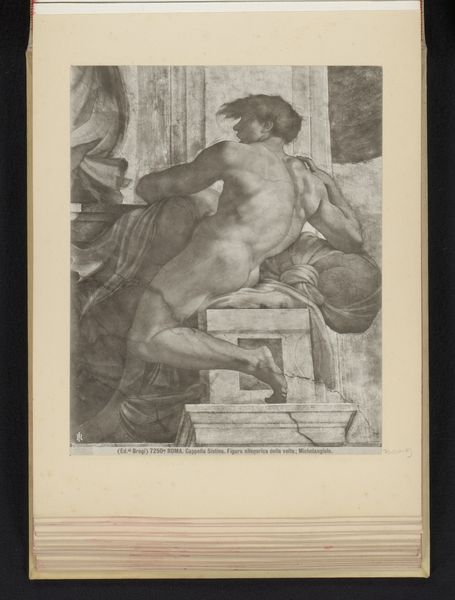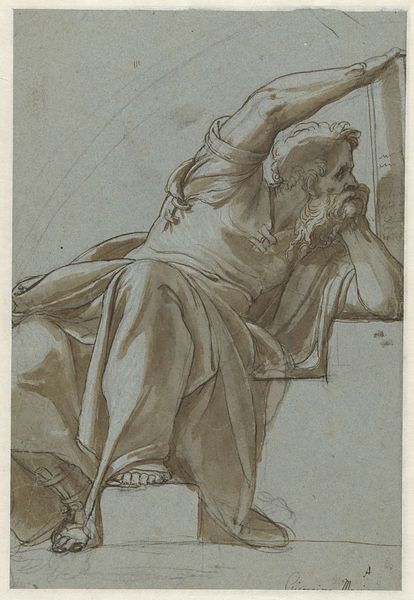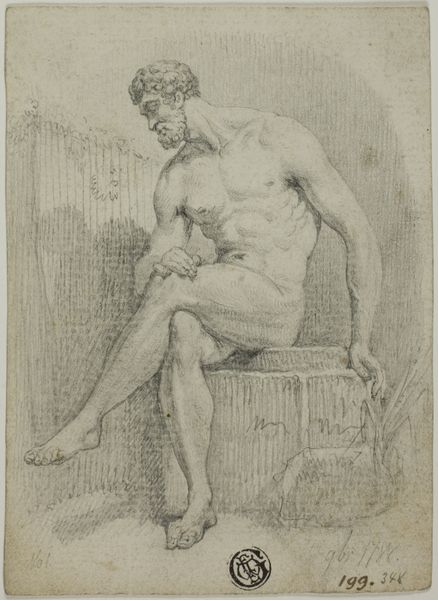
drawing, print
#
pencil drawn
#
drawing
#
amateur sketch
#
toned paper
#
light pencil work
# print
#
pencil sketch
#
personal sketchbook
#
pencil drawing
#
pen-ink sketch
#
men
#
sketchbook drawing
#
pencil work
Dimensions: Sheet (trimmed): 8 3/4 × 6 9/16 in. (22.3 × 16.7 cm)
Copyright: Public Domain
Editor: This is "Calliope, from 'Twelve Muses and Goddesses'," made between 1537 and 1550 by Léon Davent. It's a print, and I think the composition, with the figure perched precariously on that sphere, is fascinating. How do you interpret this work from a formal perspective? Curator: It presents an intriguing study in contrasts. Observe how the rigid, angular forms of the books juxtapose with the fluid, curvilinear rendering of Calliope's drapery and the spherical base. Consider how the artist employs line—notice the density of hatching in the shadowed areas versus the sparser, more delicate lines defining the figure’s illuminated surfaces. This manipulation of light and shadow not only models form but also directs the viewer's eye. What effect do you think these contrasting elements have on the overall composition? Editor: I guess the angular books draw your attention, while the lines of her drapery seem to echo the curve she's sitting on. The darker hatching around the books kind of traps your eye there at first. But how important is the material, the fact that it's a print, to how we see it? Curator: Critically so. The very nature of printmaking—its reliance on repeatable marks and matrices—introduces a layer of mediation between the artist’s hand and the final image. Note how Davent exploits this medium, creating variations in line weight and texture that mimic the tonal gradations of a drawing, while simultaneously acknowledging the inherent graphic qualities of the print. Consider, too, how the limitations of the medium might have shaped the artist’s aesthetic choices, influencing his emphasis on line and contour. Editor: So it's not just what's shown, but *how* it's shown, that gives the work meaning? I mean, it's a sketch *made* to be reproducible. Curator: Precisely. This mediation defines our reading of the image and its relationship to artistic practice itself. And remember how these details make each impression somewhat distinct due to the printing process. Editor: That’s a really insightful perspective! I never thought about how the medium itself influences how we understand the art. Curator: It is about more than just the picture shown; understanding its mechanics and its specific material properties also define how it exists within art history.
Comments
No comments
Be the first to comment and join the conversation on the ultimate creative platform.
